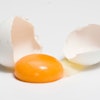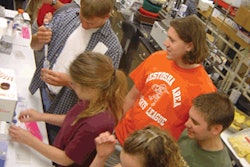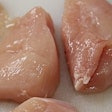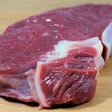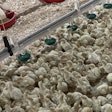Continuous improvement is a process that most organizations talk about at length, but sometimes have trouble implementing. Joseph Savarimuthu, quality assurance manager, Case Farms, Morganton, N.C., described his company's pursuit of lower salmonella incidence on post-chill carcasses at the U.S. Poultry & Egg Association's Processor Workshop. Numerous changes had been made at the plant and in live operations to lower the number of salmonella-positive carcasses in post-chill checks to below 5 percent, but the objective proved elusive. Savarimuthu said the addition of an antimicrobial dip after the final chiller provided the extra hurdle that was needed.
First steps
The Morganton plant had reasonably good salmonella numbers over the years, Savarimuthu said, but the results were inconsistent. The level of performance would not put the plant safely in Category 1, where all samples sets are at half the standard or less.
To reduce salmonella numbers, Case has tested and added a number of salmonella control practices in both the plant and the field over the past few years at the Morganton complex, Savarimuthu said. On the live side, Case uses a killed-autogenous salmonella vaccine on its breeders and the live haul cages are cleaned and sanitized on a periodic basis.
In the picking room, Case employs a brush system on the birds before they enter the scalder to remove litter and fecal material from the birds. Savarimuthu said a chlorinated rinse was added after the final pickers to clean the birds before they enter the evisceration room. Over the past few years, the plant has employed a number of chemical treatments in its online reprocessing spray cabinets and is now using a peroxyacetic acid solution (INSPEXX from Ecolab).
Broilers with an average live weight of 8.5 pounds are processed at the Morganton plant. In January, the shackle lines for the kill and evisceration processes were changed from 6-inch centers to 8-inch centers. The additional spacing between the birds can improve the efficacy of the spray cabinets. At the same time, the evisceration lines were upgraded from three 70-bird-per-minute lines to two high-speed lines. Savarimuthu said these changes gave the plant better process flow and control.
Because of the large size of the birds processed at the plant, a three-stage immersion chilling system with a two-hour dwell time is employed. The three-stages are pre-chiller, intermediate chiller and final chiller. For a number of years, the water in the chillers was pH-controlled and chlorinated to serve as an antimicrobial intervention. Recently, Case began using a peroxyacetic acid solution in only the final chiller. The pH of the final chiller is maintained between 4 and 4.5. Even with all the control steps, the plant's salmonella sample set results continued to go up and down.
Another hurdle
Savarimuthu said that Case was looking for another control that could help achieve the kind of consistent low-salmonella test results that the company wanted. The rapid temperature reduction provided by immersion chilling slows the growth of microorganisms on bird carcasses. Properly managed use of biocides, such as chlorine, in immersion chillers can reduce the number of microorganism on carcasses. The water in chillers can become loaded with organic matter over the course of the processing day and this organic matter can bind with the biocide of choice and reduce its effectiveness. Adding enough additional chilled water to effectively dilute the organic loading of the chillers is usually not practical because of water cost and availability or treatment issues.
Alternative measures
Dip tanks provide an alternative means of applying a biocide to carcasses that affords more carcass contact time than a spray cabinet, but avoids some organic loading issues of immersion chillers. Case installed a FinalKill tank, from Morris & Associates, at the end of the Morganton plant's final chiller. This operates like a dip tank.
A dip tank immerses the carcasses in a biocidal solution that has a low organic load for a defined period of time. A number of biocides can be effective when used in this manner. The Morganton plant is using an acidified sodium chlorite solution (Sanova from Ecolab). The pH in the dip tank is in the range of 2.3 to 2.9.
The dip tank provides a dwell time of 15 seconds, in a fairly small footprint. The tank is filled with 510 gallons of biocidal solution, and an additional 15 gallons-per-minute of biocidal solution is added. The tank's unloading system keeps carcasses in a queue, so that the dwell time for each carcass is neither too long nor too short.
Dip tanks typically have 10 to 15 gallons-per-minute of biocidal solution to keep the suspended organic load in the solution at an acceptable level. Some biocidal solutions can be mixed with refrigerated water and added to the dip tank, and the overflow from these tanks can be discharged to the final chiller.
Savarimuthu said that since the implementation of the dip tank at the Morganton plant, tests have consistently found a salmonella positive rate of around 2 to 3 percent of carcasses. The dip tank is not a silver bullet; it provides an additional hurdle for salmonella in the ongoing control process at the plant. It may help to place the Morganton plant comfortably in Category 1, right where Case wants it to be.

